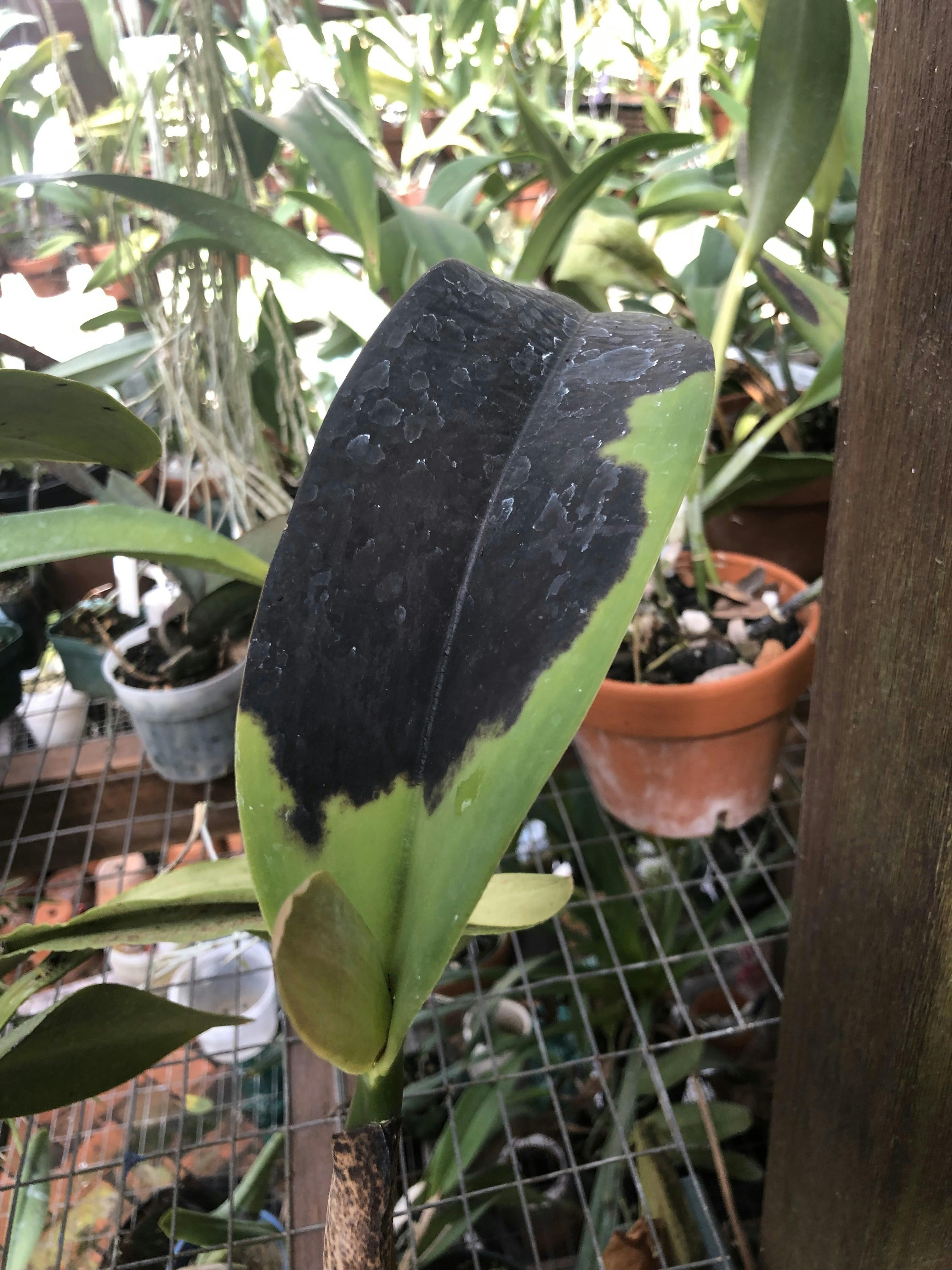
Water Molds


Gallery
Symptoms
Infections usually occur on seedlings and young plants, less frequently on older plants. The infection usually starts in the roots and spreads upward to the rhizome, pseudobulbs and leaves, although all plant parts are susceptible.
Seedlings that are kept damp are close together are most vulnerable to this disease suffering from damping off. Seedlings turn translucent brown, sometimes with black spotting.
Cattleyas may have a creamy yellow discoloration at the base of the pseudobulb that moves up through the pseudobulb to the leaves, and leaves may yellow and drop, and can lead to plant death.
Other Mature Orchids may exhibit brown to black areas on the leaf base, pseudobulbs and rhizomes that rot and can lead to plant death.
When the symptoms appear first on the leaves, the damage caused by water molds is difficult to distinguish from the damage caused by bacterial organisms such as Erwinia. Both types of organisms produce black, water-soaked lesions that spread rapidly, though the ooze produced by bacterial infections is quite offensive.
Treatment
The disease is highly contagious, so the best solution is to discard the plant and remove the source of infection from your collection. If the plant is valuable, isolate it and remove infected tissue with a sterile blade, disinfecting the blade between cuts. Drench the plants with a fungicide labeled for effectiveness on Pythium and Phytophthora. These are oomycetes, not true fungi, so many fungicides are ineffective for controlling the disease. Keep plants on the dry side until you are sure the pathogen has been eliminated from the plant.
Prevention
If you live in an area with hot, humid summers, these diseases are a seasonal hazard. Make sure plants dry thoroughly between waterings, and considered a preventative drenching program for susceptible plants and seedlings. Calcium supplements, if your water is deficient in calcium, help build strong cell walls more capable of resisting disease.

FREE ACCESS: Orchid DealWire
Get notified when orchid vendors have special promotions and exclusive savings.



